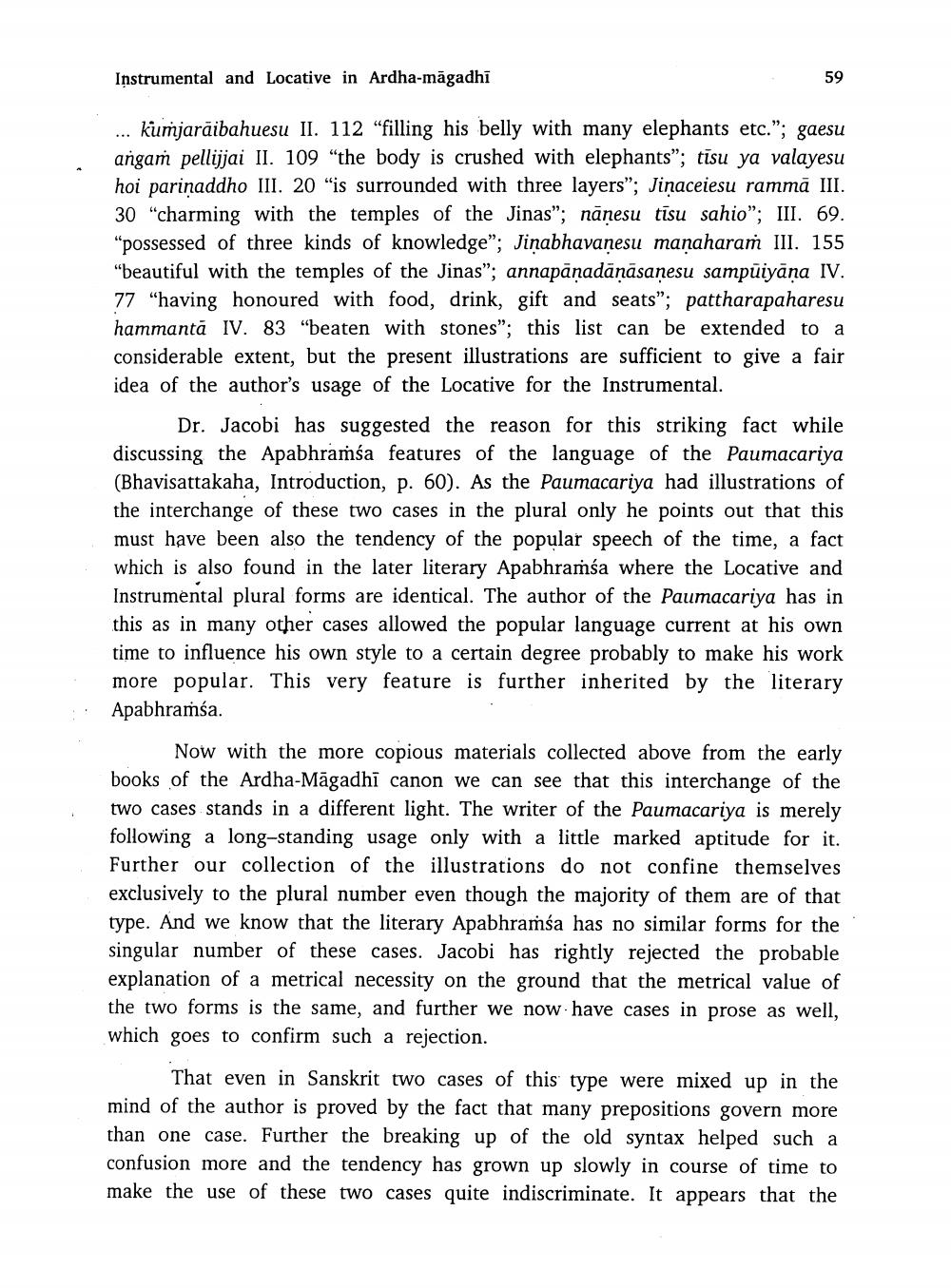________________
Instrumental and Locative in Ardha-māgadhi
59
... kumjarāibahuesu II. 112 "filling his belly with many elephants etc."; gaesu angam pellijjai II. 109 "the body is crushed with elephants"; tīsu ya valayesu hoi parinaddho III. 20 "is surrounded with three layers"; Jiņaceiesu rammā III. 30 "charming with the temples of the Jinas"; nanesu tīsu sahio"; III. 69. “possessed of three kinds of knowledge"; Jinabhavanesu manaharam III. 155 "beautiful with the temples of the Jinas”; annapāņadāņāsanesu sampūiyāna IV. 77 "having honoured with food, drink, gift and seats”; pattharapaharesu hammantā IV. 83 "beaten with stones”; this list can be extended to a considerable extent, but the present illustrations are sufficient to give a fair idea of the author's usage of the Locative for the Instrumental.
Dr. Jacobi has suggested the reason for this striking fact while discussing the Apabhramsa features of the language of the Paumacariya (Bhavisattakaha, Introduction, p. 60). As the Paumacariya had illustrations of the interchange of these two cases in the plural only he points out that this must have been also the tendency of the popular speech of the time, a fact which is also found in the later literary Apabhramsa where the Locative and Instrumental plural forms are identical. The author of the Paumacariya has in this as in many other cases allowed the popular language current at his own time to influence his own style to a certain degree probably to make his work more popular. This very feature is further inherited by the literary Apabhramśa.
Now with the more copious materials collected above from the early books of the Ardha-Māgadhi canon we can see that this interchange of the two cases stands in a different light. The writer of the Paumacariya is merely following a long-standing usage only with a little marked aptitude for it. Further our collection of the illustrations do not confine themselves exclusively to the plural number even though the majority of them are of that type. And we know that the literary Apabhramsa has no similar forms for the singular number of these cases. Jacobi has rightly rejected the probable explanation of a metrical necessity on the ground that the metrical value of the two forms is the same, and further we now have cases in prose as well, which goes to confirm such a rejection.
That even in Sanskrit two cases of this type were mixed up in the mind of the author is proved by the fact that many prepositions govern more than one case. Further the breaking up of the old syntax helped such a confusion more and the tendency has grown up slowly in course of time to make the use of these two cases quite indiscriminate. It appears that the




